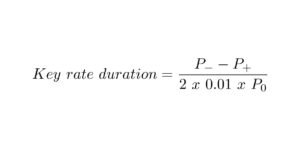What are the Korean composite stock price indexes?
Korean Composite Stock Price Indexes (KOSPI) refer to indexes that track the overall Korean Stock Exchange and its components. Each of the KOSPI indexes is a capitalization-weighted market average.
The best-known of these indexes is the KOSPI 200, which comprises the 200 most extensive publicly traded common stocks in Korea, tracking roughly 70% of the overall Korean Stock Exchange market value.
The KOSPI 200 is used as a rough benchmark when investors or traders refer to the performance of the Korean Exchange. For this reason, and because its components are large-cap stocks, people compare the KOSPI 200 to the S&P 500 in the United States.
As of 2021, major KOSPI 200 components included consumer product maker Samsung Electronics, Hyundai Motor, semiconductor manufacturer SK Hynix, utility provider Korea Electric Power, and Shinhan Bank.
Understanding the Korean Composite Stock Price Indexes
The Korean Composite Stock Price Indexes (KOSPI) first debuted in the early 1980s, with several variants rolled out in subsequent years, including the KOSPI 100, which focused on mid-caps, and the KOSPI 50, which represents small caps. The KOSPI also refers to a family of indices tracking specific industries, including chemicals and banks, and the KODI index, which specializes in dividend stocks. Also, the KOSPI appears on several other products that track the prices of futures, options, and sovereign bonds.
While KOSPI refers to the entire family of indexes, many market participants call the KOSPI 200 the KOSPI.
History of the KOSPI 200
The KOSPI 200 began trading at the start of January 1983 at a value of 122.52.
Its base value, indexed to January 4, 1980, is 100. The KOSPI 200 rose more than 8-fold to a value of more than 1,000 by April of 1989, roughly two years following the Asian financial crisis. The index value surged to 1,997.06 by its 30th birthday at the end of 2012, trailing only the Hong Kong Stock Exchange and Taiwan Stock Exchange over the same time frame. The KOSPI 200 index stood at roughly 2,470 by mid-2018, up more than 20-fold since its introduction.
Notable dates for the KOSPI include June 17, 1988, when it gained about 8.5%, its most significant one-day percentage gain. It also fell more than 12% on September 12, 2001, the day following the 9/11 terrorist attack in the U.S. The index closed above 2,000 for the first time on July 24, 2007.
Analysts, market participants, and the international financial news media allow SPI 200 to vary. U.S.-based news outlets such as The Wall Street Journal, Bloomberg, and London-based Reuters, owned by Canada-based Thomson Reuters, often quote the index and use its values when reporting on market events in Korea.













































